WEEK 14
WHAT'S MY NARRATIVE?
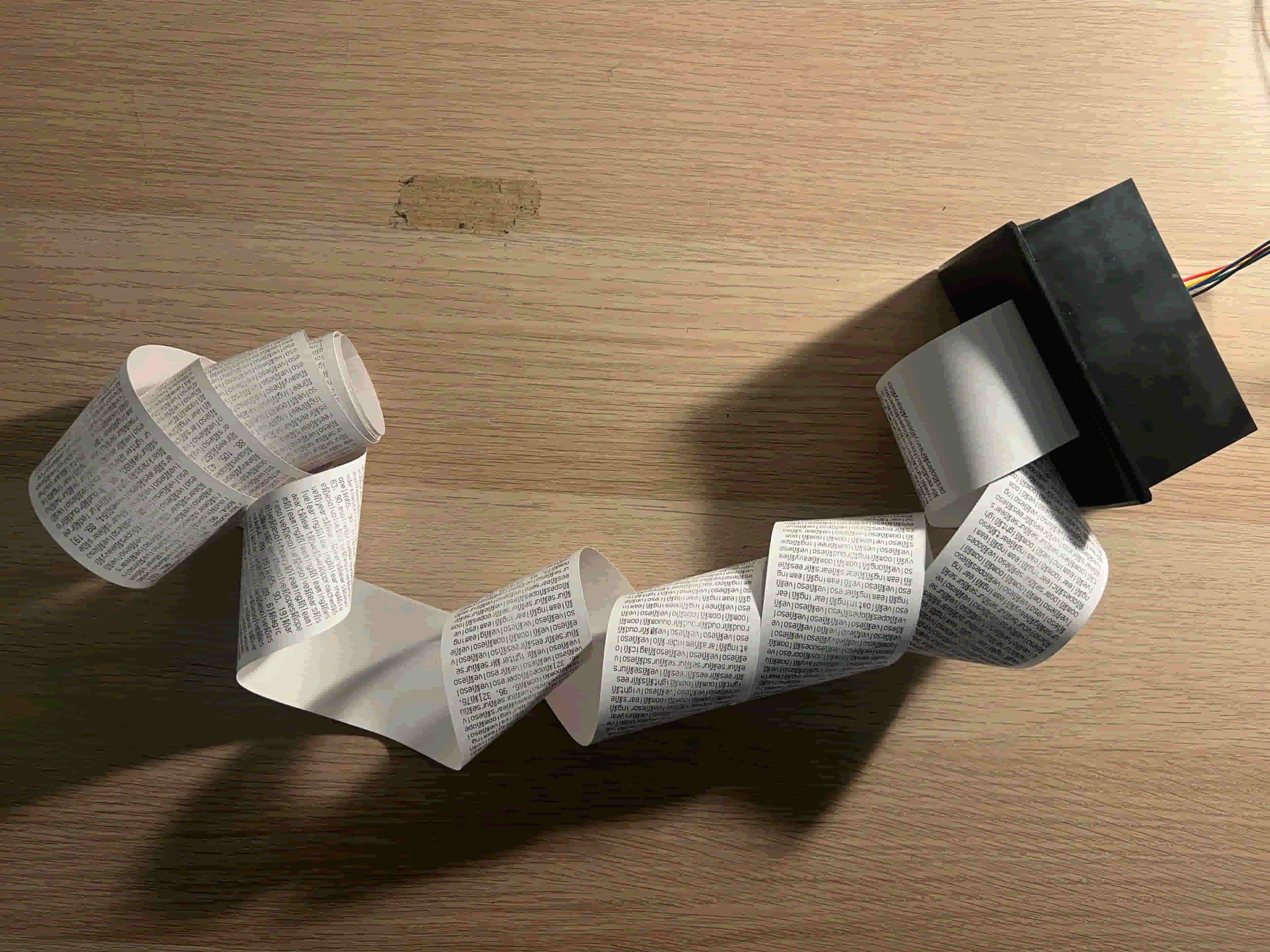
Thermal Printed connected to an arduino
Prototype (Proposal)
Memory Receipt
I bought a thermal printer in Kuriosity after Soda told me that I could print my second experiment which is Quantifying Images on a long scroll of paper. After looking for the thermal printer on the internet, I got interested into it and it made me think about using the thermal printer as a potential tool for my prototype.
I thought of using thermal printer as a receipt is something that fades over time. Although it fades, its remains of heated paper are still there even after years keeping them. I thought that this material and characteristics could align with the concept of memory and how it fades over time as we forget.
How can it be valueable?
I actually thought that my project needed something more, something external, like an input from other people as most of my experiments are between me and the machine. So I thought using this thermal printer as part of the experience could help others experiencing my concept, and maybe also becoming something that they can take home, which is a memory receipt.
a memory receipt that acts as a prove that you spent time on something...
Building up from my first experiment, I thought I could develop it a bit with this thermal printer. In the first task that I did, I was just merely collecting data from them, so I thought I could engage them more by giving them a memory receipt. Why receipt? A receipt is a prove of something, a prove that you bought something, a prove that you spend time.
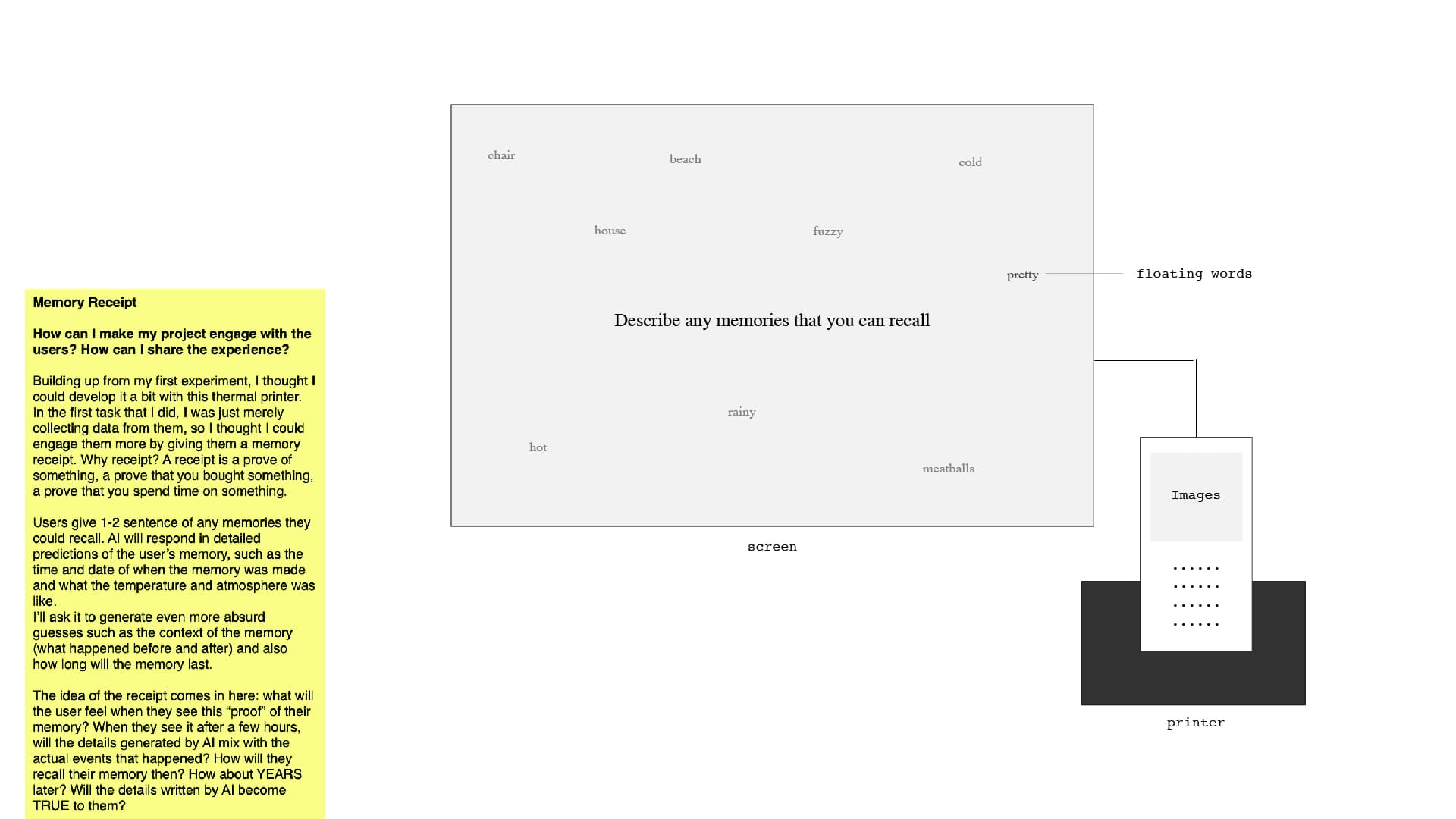
To give a brief explanation about the sketch: Users give 1-2 sentence of any memories they could recall. AI will respond in detailed predictions of the user’s memory, such as the time and date of when the memory was made and what the temperature and atmosphere was like. I’ll ask it to generate even more absurd guesses such as the context of the memory (what happened before and after) and also how long will the memory last.
The idea behind the receipt comes as: What will the user feel when they see this “proof” of their memory? When they see it after a few hours, will the details generated by AI mix with the actual events that happened? How will they recall their memory then? How about YEARS later? Will the details written by AI become TRUE to them?
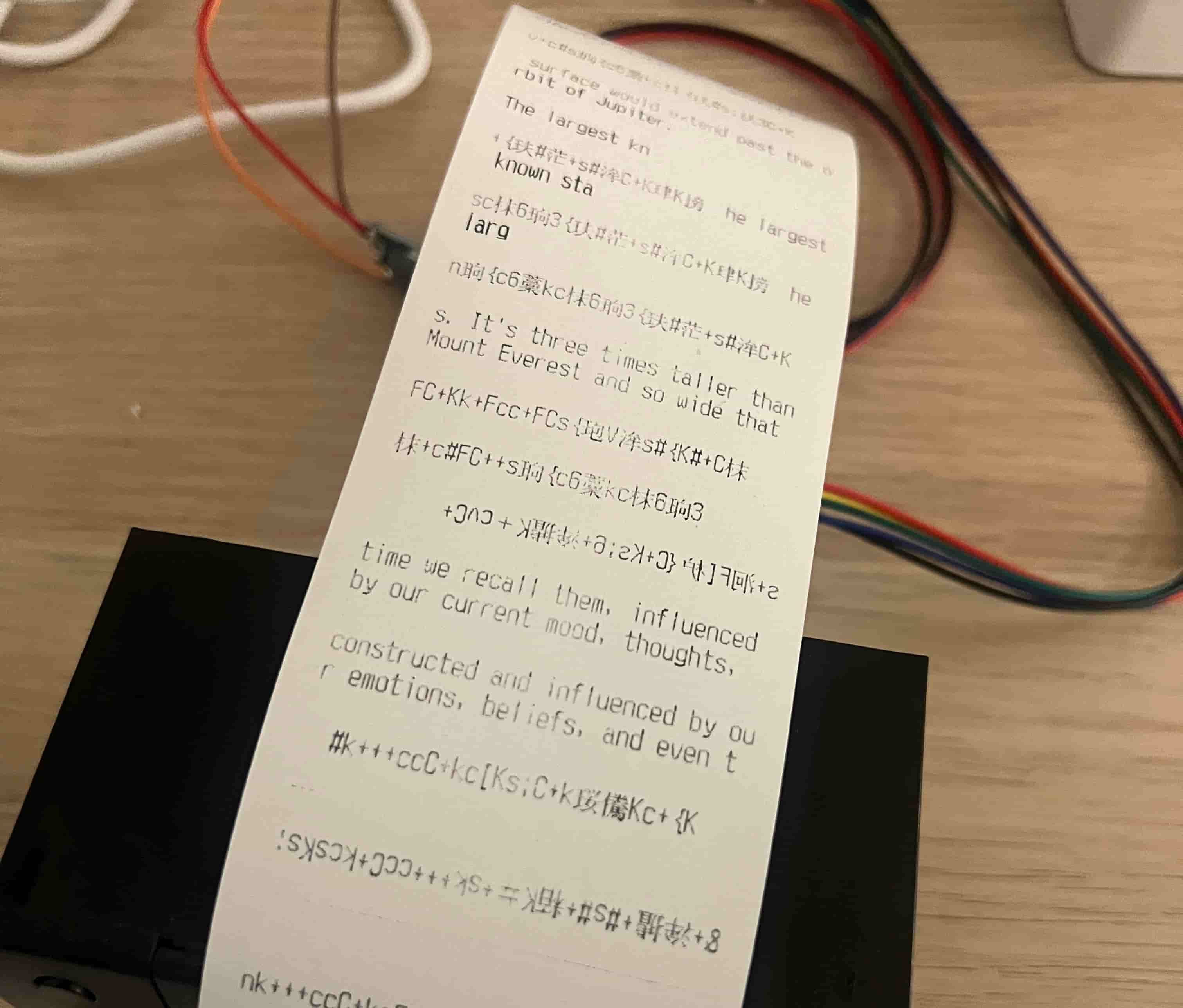
Printing Bitmap it doesn't work
Technical Process
I used Andreas sketch template in p5js to write a prompt and send it to Gemini, then the response will be sent to arduino for printing. Although the results are a bit wonky, and some texts are not printed well, I somehow managed to get the printer connected to Gemini Responses. However, the challenge I faced when dealing with the printer was printing the bitmap images into the printer.
I was hoping I could send a generated image on live from a generative model (like DALLE or other version of Gemini) to the printer. But, it didn't work and from that moment I knew I should've just been more patient about it and start simple first.
So I tried to test print the bitmap images with the Adafruit Library (which normally supposed to work), however, it seems like the printer doesn't support that library and there were no clear instructions or manual on how the bitmap works. After doing several tries and finding different library, a disaster just swoop me up.
The Printer Broke Down...
At this point, I felt really frustrated as I had limited time to work on this, and the printer just stopped working after using it for two days. I couldn't even get a chance to experiment more with the text, as it stopped working all of a sudden without any warning. So it left me no choice but to just move on and try another solution. This was the day before my consultation sesssion with Andreas which I was supposed to bring something to show him for the prototype. However, things really didn't go as smooth as I expected.

Suggestions...
After showing my progress to Andreas and explaining my thought process and plan for the thermal printer, Andreas suggested that it might not be a good idea to start a new idea. I halfly agreed to that as some part of me were already frustrated with the thermal printer. It made me felt that the outcomes were probably not gonna be worth it. And considering how much time I had to invest on it, I didn't think I would have any time to finsih all of my delievarables.
So what Andreas suggested me was to compile my works and create a "frame" on it. I have done lots of experiments and it would be such a waste to not contribute these experiments in the final process. He asked me to create a "frame" that could somehow be the medium for people to experience my experiments together.
I was thinking of doing either a publication but not like a normal book more like an art book or an experiential website. But if I were to choose one, I think I would enjoy coding more than going to the print shop. So I decided to go with this plan: which is creating an experiential website where people can view my curated experiments as an outcome. The only problem was that I had to figure out how to differentiate this web from my catalogue of making so it looks different.
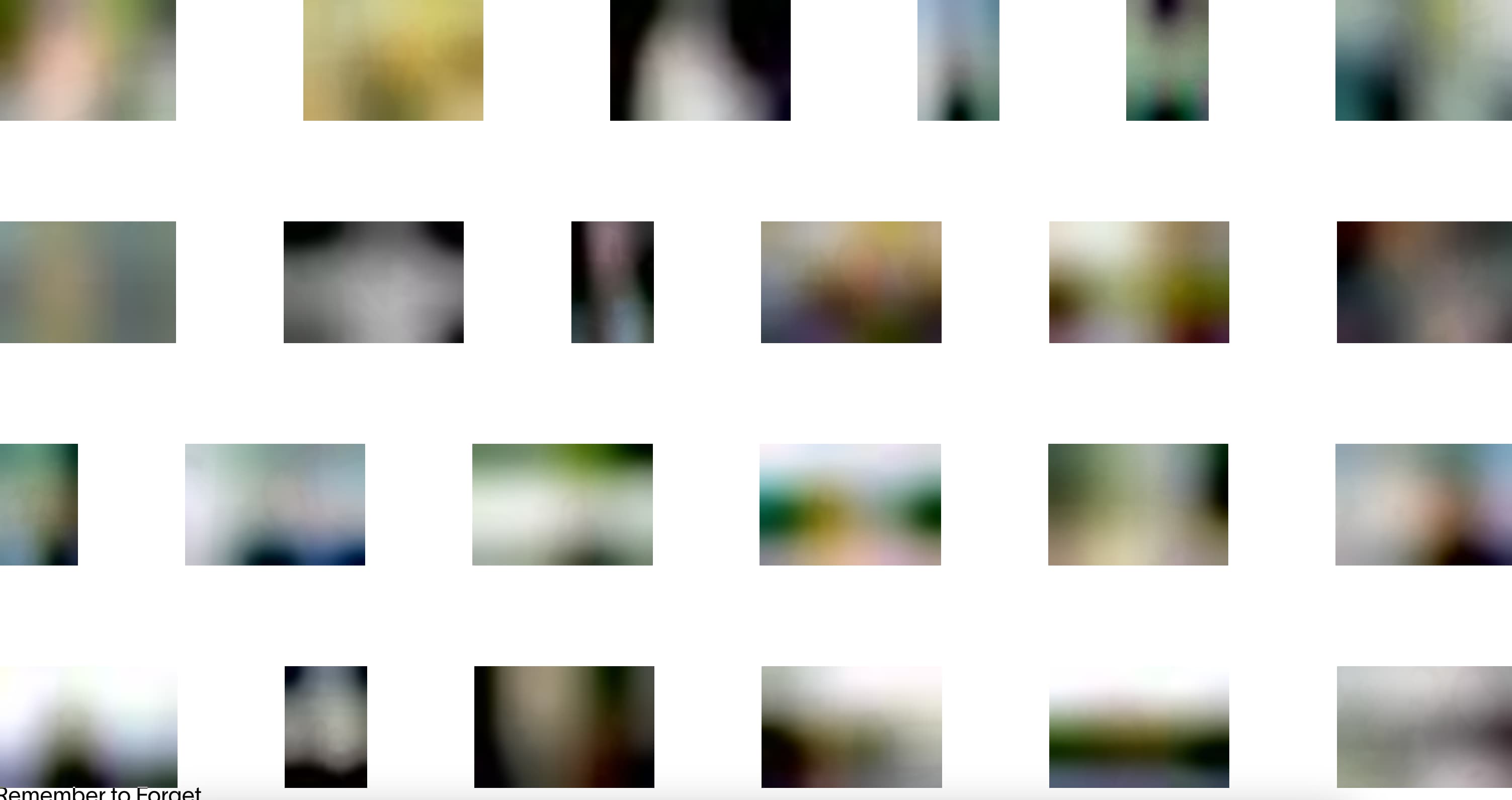
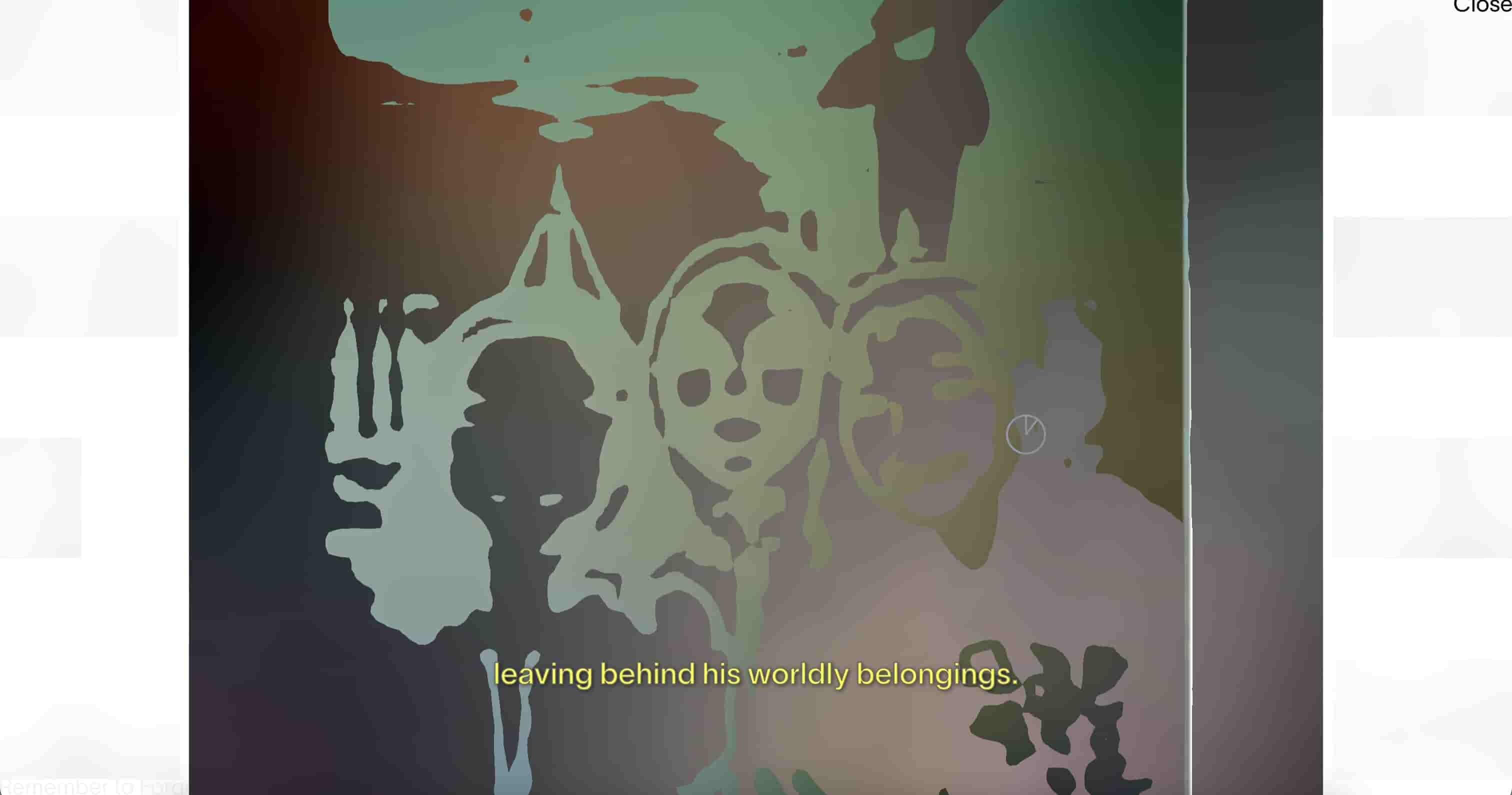
Remember to Forget by Faris Kassim
Reflections
I got reminded of a web space created by Faris Kassim which is I would consider as an experiential web. This website "Remember to Forget" is an ongoing project of his film archives taken since 2010. What I like bout it is how he uses the web as an art domain where his film archives are blurred to the point where objects scattered in the frame are completely distinguishable.
I thought that my website could have a space like how this website has it, a space of where users can experience the realm of the past through this downsized images that Faris presented.
Inspired by this concept, I decided to do a website for my final prototype. A website that is used as an exhibition space for people to be able to navigate and experience my experiments and narratives.